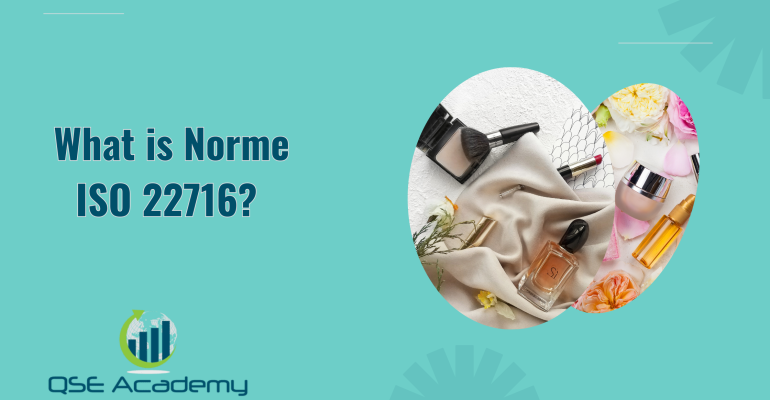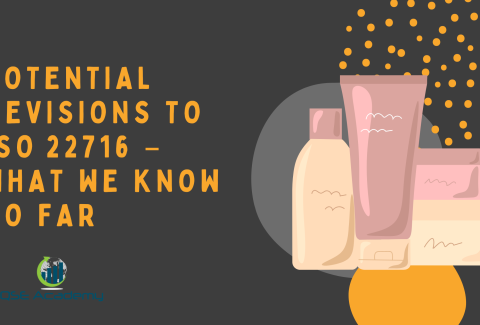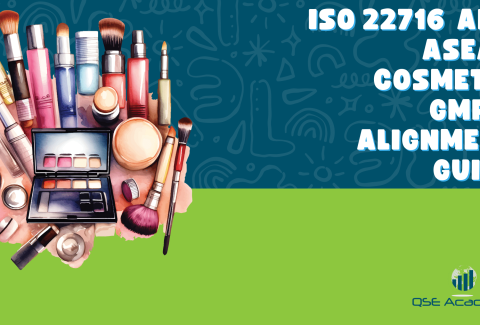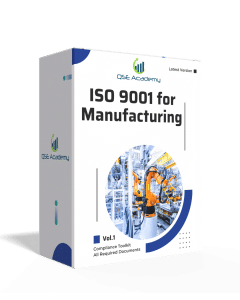What is Norme ISO 22716?
Last Updated on September 24, 2025 by Melissa Lazaro
What is Norme ISO 22716?
Have you ever stopped to wonder how your favorite cosmetics—like that luxurious lotion or vibrant lipstick—are made safely and consistently? Behind every trusted beauty product is a set of strict standards ensuring it’s safe to use and meets quality expectations. That’s where norme ISO 22716 comes into play.
If you’ve heard the term norme ISO 22716 but aren’t entirely sure what it means, don’t worry—you’re not alone. At its core, this standard is all about ensuring that cosmetic products are manufactured under the safest and most controlled conditions. It’s like a global rulebook for Good Manufacturing Practices (GMP) specifically designed for the cosmetics industry. Whether you’re running a business in the beauty world or simply curious about what happens behind the scenes, understanding norme ISO 22716 is a game-changer.
This norme covers everything from hygiene and cleanliness to quality control and proper staff training. It’s designed to help cosmetic manufacturers produce products that are safe, consistent, and meet customer expectations. The best part? The guidelines aren’t just helpful for big global brands—they’re just as important for small businesses looking to build trust and credibility.
In this article, we’ll dive into what norme ISO 22716 is, why it’s essential, and how it benefits businesses and consumers alike. So, whether you’re a beauty enthusiast or a cosmetics professional, stick around—we’re about to unpack everything you need to know about this essential standard. Let’s get started!
Understanding Norme ISO 22716
Alright, let’s get into the heart of it—what exactly is norme ISO 22716 all about? If you’re in the cosmetics world or just curious about how products are made, this is where the magic happens. Simply put, norme ISO 22716 is an international standard that outlines Good Manufacturing Practices (GMP) specifically for cosmetic products. Think of it as a set of instructions to ensure that everything—from the raw materials to the final packaging—is handled in a safe, clean, and organized way.
What Does Norme ISO 22716 Cover?
The beauty of norme ISO 22716 is how comprehensive it is. It’s not just about one part of the process—it looks at the entire journey of a product. Here are some of the key areas it focuses on:
- Hygiene and Cleanliness: This covers everything from maintaining a spotless production environment to making sure staff follow strict hygiene practices. After all, no one wants their skincare products made in a messy or contaminated facility.
- Quality Control: With norme ISO 22716, there are clear guidelines for testing and inspecting products at every stage of production. This ensures that every item leaving the factory is safe, consistent, and up to standard.
- Employee Training: The standard emphasizes the importance of well-trained staff. Everyone involved in the process needs to understand their role in maintaining safety and quality.
- Documentation: Record-keeping is a big part of norme ISO 22716. This means keeping detailed logs of production steps, materials used, and any testing carried out. Why? Because if something goes wrong, you’ll know exactly where to look and how to fix it.
Why Was Norme ISO 22716 Created?
The cosmetics industry is huge, and products are sold all over the world. But here’s the catch: different countries have different regulations. This can be confusing for manufacturers and even risk safety issues if standards aren’t consistent. That’s where norme ISO 22716 steps in—it provides a unified set of guidelines recognized globally.
This standard was created to ensure that cosmetics are manufactured in a way that protects consumers and meets international expectations. It’s like creating a universal language for safety and quality in the cosmetics world. Whether a product is made in Paris, Tokyo, or New York, following norme ISO 22716 ensures that it’s held to the same high standards.
By breaking everything down into clear, actionable steps, norme ISO 22716 makes it easier for businesses to implement Good Manufacturing Practices and meet regulatory requirements. And for consumers? It’s a reassurance that the products they’re using are safe, reliable, and created with care. How great is that?
The Key Benefits of Implementing Norme ISO 22716
So, why should businesses care about norme ISO 22716? What’s in it for them? If you’re running a cosmetics company or even just thinking about starting one, implementing this standard can bring a world of benefits. Let me break it down for you in simple, relatable terms.
1. Improved Product Safety and Quality
First and foremost, norme ISO 22716 is all about safety. Imagine you’re manufacturing a face cream or lipstick. You want every single jar or tube to be free from contamination, perfectly formulated, and consistent. Following the guidelines in norme ISO 22716 ensures that your products meet these expectations. It sets up a clear framework for safe production, from how raw materials are handled to how the final product is packaged.
For consumers, this means peace of mind. They know that the products they’re using were made with care and attention to detail. And for you? Fewer quality issues and happier customers. Win-win!
2. Legal and Regulatory Compliance
Let’s face it: navigating regulations can be tricky. Every country has its own set of rules for cosmetics, and keeping up with them can feel overwhelming. That’s where norme ISO 22716 becomes your best friend. Because it’s recognized internationally, following this standard helps you tick all the right boxes when it comes to legal compliance.
Whether you’re selling locally or aiming for global markets, norme ISO 22716 ensures you’re meeting the requirements. This can save you from costly fines, product recalls, or even legal trouble. Plus, many regulatory bodies see compliance with this norme as a mark of credibility.
3. Builds Customer Trust and Confidence
In today’s world, consumers are more informed than ever. They want to know that the products they’re using are safe, ethically produced, and meet high standards. When your business follows norme ISO 22716, it’s like giving your customers a big stamp of assurance. It shows them that you care about quality and safety as much as they do.
Having norme ISO 22716 compliance can even become a selling point. You can proudly share that your manufacturing practices align with global standards, helping to build trust and loyalty among your customers.
4. Easier Access to Global Markets
Dreaming of taking your products international? Following norme ISO 22716 can make that dream a reality. Because this standard is recognized worldwide, it acts as a sort of “passport” for your products. It simplifies the process of entering new markets since regulatory bodies in different countries already trust the guidelines it outlines.
Whether you’re looking to expand into Europe, Asia, or anywhere else, adhering to norme ISO 22716 can make the transition smoother and more efficient.
5. Increases Operational Efficiency
Here’s a bonus you might not expect: implementing norme ISO 22716 can actually streamline your operations. By following the structured guidelines, you can identify inefficiencies, reduce waste, and optimize your production processes.
Think of it like a roadmap that helps your team work smarter, not harder. When everyone knows the standards and follows them, it creates a more organized and effective workflow. And who doesn’t love saving time and money?
By implementing norme ISO 22716, you’re not just following a set of rules—you’re investing in the future of your business. From improving product quality to opening doors to new markets, this standard offers benefits that go far beyond compliance. It’s a tool for growth, trust, and success. So, why wouldn’t you want that?
Breaking Down the Components of Norme ISO 22716
Now that we’ve covered why norme ISO 22716 is such a game-changer, let’s take a closer look at what it actually involves. Think of it as a roadmap for Good Manufacturing Practices (GMP) in the cosmetics industry. The standard lays out clear, practical steps to ensure that everything from production to packaging runs smoothly and safely. Here’s how it all breaks down.
1. Manufacturing Practices
At its core, norme ISO 22716 focuses on making sure that cosmetic products are made in a safe, clean, and organized way. This means having clear processes in place for every step of production. Whether you’re mixing ingredients for a facial serum or filling bottles with shampoo, the guidelines ensure consistency and minimize the risk of errors.
For example, the norme emphasizes avoiding cross-contamination between different products and batches. This might mean using dedicated equipment for certain tasks or thoroughly cleaning machinery between runs. By following these practices, you’re not just making products—you’re ensuring they’re safe and of high quality.
2. Hygiene and Workplace Cleanliness
Here’s a no-brainer: hygiene is everything in cosmetics manufacturing. Norme ISO 22716 includes detailed guidelines to maintain a clean and sanitary production environment. This covers everything from how to store raw materials to how frequently equipment should be cleaned.
It also applies to staff. Employees need to follow strict hygiene rules, like wearing proper protective gear, washing their hands regularly, and ensuring they don’t bring contaminants into the workspace. After all, no one wants their face cream or eyeliner made in an environment that isn’t spotless.
3. Quality Control Measures
Ever wonder how companies ensure that every product on the shelf is just as good as the last? That’s where quality control comes in, and it’s a big part of norme ISO 22716. The standard requires businesses to test and inspect their products at different stages of production.
For instance, raw materials might be tested before production begins to ensure they meet the required standards. Finished products are also checked for things like consistency, packaging integrity, and compliance with regulations. This attention to detail helps catch any potential issues before the product reaches customers.
4. Staff Training and Roles
You can’t implement norme ISO 22716 without a well-trained team. The standard stresses the importance of training employees so they understand their roles and responsibilities in maintaining safety and quality.
This might include training on hygiene practices, proper equipment usage, or how to handle raw materials. When everyone knows exactly what they’re supposed to do, it reduces the risk of mistakes and creates a more efficient production process.
5. Documentation and Record-Keeping
One of the most important components of norme ISO 22716 is documentation. Why? Because keeping detailed records ensures transparency and accountability. It also makes it easier to trace and fix issues if something goes wrong.
For example, businesses are required to log every step of the manufacturing process, from sourcing raw materials to shipping the final product. These records act as a trail of evidence, proving that you’ve followed the guidelines and can back up your claims of quality and safety.
By breaking down these components, norme ISO 22716 provides a clear framework for cosmetics manufacturers to follow. It’s not about making things harder—it’s about creating a system that works efficiently while keeping safety and quality at the forefront. Whether you’re just starting out or looking to refine your processes, these guidelines are like a recipe for success in the cosmetics industry. And honestly, who doesn’t want that?
Who Needs to Follow Norme ISO 22716?
If you’re wondering whether norme ISO 22716 is something you need to worry about, let’s break it down together. This standard isn’t just for massive corporations or fancy global brands—it’s for anyone involved in the cosmetics industry. Whether you’re a small startup crafting artisanal skincare products or a large-scale manufacturer, norme ISO 22716 has something valuable to offer.
1. Cosmetic Manufacturers
Let’s start with the obvious: if you’re producing cosmetics, you need to know about norme ISO 22716. It doesn’t matter if you’re making face creams, shampoos, lipsticks, or bath bombs—this standard is your go-to guide for Good Manufacturing Practices (GMP).
Following norme ISO 22716 ensures that your products are made in a safe, consistent, and high-quality environment. It helps you avoid contamination, improve efficiency, and meet legal requirements. Plus, it’s a great way to build trust with your customers, showing them that you take safety and quality seriously.
2. Suppliers and Distributors
Think norme ISO 22716 only applies to manufacturers? Think again! Suppliers and distributors also play a key role in ensuring the cosmetics supply chain stays compliant. For suppliers, this means providing high-quality, safe raw materials that meet the requirements of the norme.
Distributors, on the other hand, benefit from knowing the products they’re selling were manufactured according to norme ISO 22716 guidelines. It’s all about creating a chain of accountability, where every part of the process—from sourcing to selling—meets the highest standards.
3. Small Businesses and Indie Brands
If you’re running a small or indie cosmetics brand, you might feel like standards like norme ISO 22716 don’t apply to you. But the truth is, they’re just as important for smaller businesses.
Why? Because they help you establish credibility in a competitive market. By following norme ISO 22716, you’re showing customers that you’re committed to safety and quality, even if you’re not a big-name brand. It also prepares you for growth—if you plan to expand into larger markets or sell internationally, having this standard in place will make the process much smoother.
4. Retailers and Private Labels
Retailers and private labels also have a vested interest in norme ISO 22716. If you’re selling products under your own brand name but outsourcing the manufacturing, you’ll want to ensure your partners are compliant with the norme.
Why? Because your brand’s reputation is on the line. If something goes wrong—like a product recall or safety issue—it could harm your business. By working with manufacturers who follow norme ISO 22716, you’re protecting your brand and ensuring your customers receive safe, reliable products.
5. Regulatory Bodies and Auditors
Even if you’re not directly involved in making or selling cosmetics, you might still work in a role that touches on norme ISO 22716. Regulatory bodies and auditors use this standard as a benchmark to ensure that companies are following best practices.
For auditors, the norme ISO 22716 provides clear guidelines to evaluate a company’s manufacturing processes. For regulatory bodies, it acts as a trusted framework for ensuring consumer safety.
In short, norme ISO 22716 is for anyone connected to the cosmetics industry. Whether you’re mixing ingredients, sourcing raw materials, or selling products to customers, this standard helps create a safer, more reliable industry for everyone. And honestly, wouldn’t you want to be part of that?
Steps to Implement Norme ISO 22716
So, you’ve decided that implementing norme ISO 22716 is the right move for your cosmetics business—great choice! But where do you even start? Don’t worry, it’s not as overwhelming as it sounds. Let’s break it down into simple, manageable steps that will help you align your processes with this essential standard.
1. Understand the Requirements
The first step to implementing norme ISO 22716 is to really understand what it’s all about. This means getting your hands on the official document (you can find it online through ISO or authorized distributors) and taking the time to read through it.
Yes, it’s a bit technical, but don’t let that scare you. Think of it as a detailed guidebook that explains exactly how to make your manufacturing practices safer, cleaner, and more efficient. Highlight key sections that apply to your business and start familiarizing yourself with the terminology and processes.
2. Conduct a Gap Analysis
Before diving into changes, take a good look at your current manufacturing processes and compare them to the guidelines in norme ISO 22716. This is called a gap analysis.
Ask yourself:
- Are there areas where hygiene could be improved?
- Do we have proper documentation and records for each stage of production?
- Are our employees fully trained in Good Manufacturing Practices?
Identifying these gaps will give you a clear idea of where your business already meets the norme and where you need to make improvements.
3. Develop an Action Plan
Once you know what needs to be done, it’s time to create a step-by-step plan to implement norme ISO 22716. This plan should address all the gaps you identified and outline specific actions for each area.
For example, if your documentation process is lacking, your action plan might include setting up a system for recording every stage of production. If hygiene needs improvement, you could include steps like upgrading cleaning protocols or investing in staff training.
Remember, you don’t have to do everything at once. Break it into smaller, manageable tasks to make the process less overwhelming.
4. Train Your Team
Your employees play a huge role in successfully implementing norme ISO 22716, so training is essential. Make sure everyone involved in production understands the guidelines and their specific responsibilities.
For example, staff should know:
- How to maintain hygiene standards.
- The proper way to handle and store raw materials.
- How to fill out documentation and keep accurate records.
Regular training sessions and refreshers can go a long way in keeping everyone on the same page.
5. Update Your Processes and Equipment
With your plan in place and your team trained, it’s time to make the necessary changes to your processes. This might involve updating workflows, improving sanitation procedures, or even investing in new equipment that better aligns with norme ISO 22716 requirements.
For instance, if your storage conditions don’t meet the standards, you might need to upgrade to temperature-controlled storage areas. If your production line lacks clear separation between different product batches, adjustments will be necessary to prevent cross-contamination.
6. Monitor and Audit Your Practices
Once you’ve implemented the changes, don’t just set it and forget it. Regular monitoring and internal audits are key to staying compliant with norme ISO 22716.
Schedule routine checks to ensure hygiene standards are being followed, records are up to date, and processes are running smoothly. This will help you catch any issues early and continuously improve your operations.
7. Consider Certification
While it’s not mandatory, getting certified for norme ISO 22716 can be a great way to show customers and partners that you’re serious about quality and safety. ISO 22716 Certification involves an external audit by an accredited body, which verifies that your business meets all the requirements of the norme.
By following these steps, implementing norme ISO 22716 becomes a clear and achievable goal. It’s not about overhauling your business overnight—it’s about making thoughtful, gradual improvements that lead to safer, more efficient operations. And trust me, the effort is well worth it when you see the positive impact it has on your products, customers, and business reputation!
The Global Importance of Norme ISO 22716
Let’s talk about why norme ISO 22716 isn’t just a buzzword—it’s a global standard that’s reshaping the cosmetics industry. Whether you’re a small local brand or a major international company, this standard is recognized worldwide as the benchmark for safety and quality in cosmetics manufacturing. But why is it so important on a global scale? Let’s break it down.
1. Unifying Standards Across Borders
One of the biggest challenges for cosmetic brands operating in multiple countries is navigating different regulations. What’s acceptable in one country might not fly in another, and this can create confusion, delays, and even product recalls.
This is where norme ISO 22716 shines. It provides a single, internationally recognized set of guidelines that ensures consistency across borders. Whether you’re producing in France, exporting to the U.S., or entering markets in Asia, following norme ISO 22716 helps you meet the expectations of regulatory bodies worldwide. It’s like speaking a universal language in the cosmetics industry.
2. Opening Doors to International Markets
Dreaming of taking your products global? Adhering to norme ISO 22716 can make that dream a lot easier. Many countries use this standard as part of their regulatory framework, meaning that if you comply with it, you’re already meeting many of their requirements.
For example, the European Union, a massive market for cosmetics, recognizes norme ISO 22716 as a critical component of compliance with their regulations. By aligning with this standard, you’re not just ensuring safety—you’re also giving your brand a ticket to expand into international markets without running into regulatory roadblocks.
3. Boosting Trust with Global Partners and Consumers
When you comply with norme ISO 22716, it’s not just your customers who take notice—distributors, suppliers, and business partners see it too. It signals that your brand is serious about quality and safety, which can open up new opportunities for collaborations and partnerships.
On the consumer side, the fact that your products are made in accordance with norme ISO 22716 can be a significant selling point. In a world where people are more conscious of product safety and ethical production, this certification helps build trust and sets you apart from competitors who may not follow such rigorous standards.
4. Supporting Consumer Safety Worldwide
At the end of the day, norme ISO 22716 exists to protect consumers. By following its guidelines, companies ensure that their products are safe, reliable, and free from contamination. This is especially critical in an industry where products are applied directly to the skin, hair, or face.
Globally, adherence to norme ISO 22716 helps reduce risks associated with poorly manufactured cosmetics. It’s a collective effort to create a safer marketplace, and the more companies that adopt it, the better for everyone.
5. Setting the Stage for Future Innovations
Another reason norme ISO 22716 is so important on a global level is that it lays a solid foundation for innovation. When companies have clear, safe, and consistent manufacturing processes, they can focus more on creating new, exciting products without worrying about compliance issues.
Whether it’s developing eco-friendly packaging, using sustainable ingredients, or exploring new formulations, having the structure provided by norme ISO 22716 makes it easier to innovate responsibly.
By adopting norme ISO 22716, you’re not just meeting a standard—you’re becoming part of a global movement towards safer, higher-quality cosmetics. It’s about building trust, opening doors to new markets, and ultimately creating products that people around the world can use with confidence. And isn’t that the kind of legacy you want for your brand?
Common Misconceptions About Norme ISO 22716
Let’s face it—when people hear about standards like norme ISO 22716, their first reaction might be a mix of confusion and hesitation. “Isn’t it just for big companies?” “Isn’t it too complicated to follow?” These are some of the common misconceptions that can hold businesses back from embracing this game-changing guideline. Let’s clear the air and tackle these misunderstandings one by one.
1. “Norme ISO 22716 Is Only for Big Companies”
This is probably the most common misconception out there, and it couldn’t be further from the truth. Sure, you might picture massive cosmetics factories when you think about norme ISO 22716, but this standard is just as relevant for small businesses and indie brands.
In fact, smaller companies often benefit even more from implementing norme ISO 22716 because it helps them establish strong processes right from the start. Following these guidelines can give your brand a level of professionalism and credibility that’s hard to achieve otherwise, no matter your size. And if you’re dreaming of growing your business, aligning with norme ISO 22716 early on sets you up for smooth scaling later.
2. “It’s Too Complicated to Implement”
Let’s be real—hearing about standards and regulations can feel overwhelming. But the beauty of norme ISO 22716 is that it’s designed to be practical and actionable. It breaks down the big concept of Good Manufacturing Practices (GMP) into clear, step-by-step guidelines that any business can follow.
Yes, it takes some effort to get everything set up, but it’s not impossible! Think of it like organizing your workspace or creating a daily routine—it’s all about making things run smoother and more efficiently. Plus, resources like the official norme ISO 22716 document, training programs, and consultants are there to help you every step of the way.
3. “It’s Just About Hygiene”
While hygiene is a big part of norme ISO 22716, it’s far from the whole story. This standard covers everything from production processes to quality control, employee training, and documentation.
For example, it guides you on how to properly handle raw materials, track production batches, and even store your finished products. The goal is to create a comprehensive system that ensures safety and quality at every stage—not just keeping things clean (although that’s important too!).
4. “It’s Not Worth the Time or Investment”
Some people think that implementing norme ISO 22716 is just another business expense without much payoff. But let me tell you—it’s one of the smartest investments you can make.
Why? Because it’s about protecting your business and your customers. Following norme ISO 22716 reduces the risk of product recalls, legal issues, or negative customer experiences. Plus, it gives you a competitive edge by showing that you meet internationally recognized standards. In today’s market, that kind of credibility is priceless.
5. “It’s Only for Exporting Products”
While it’s true that norme ISO 22716 is essential for companies looking to enter international markets, it’s not just for exporters. Even if you’re a local brand, following this standard helps you stay compliant with local regulations and build trust with your customers.
In fact, many consumers are becoming more aware of standards like norme ISO 22716 and prefer buying from brands that adhere to them. It’s not just about where you sell—it’s about how you operate.
By debunking these misconceptions, it’s clear that norme ISO 22716 is more than just a set of rules. It’s a practical, accessible guide that any cosmetics business—big or small—can use to improve safety, efficiency, and customer trust. So, don’t let these myths hold you back! Embracing norme ISO 22716 might just be the smartest move your business makes.
Conclusion: Why Norme ISO 22716 Matters for Your Business
So, after everything we’ve talked about, one thing is clear—norme ISO 22716 is more than just a set of guidelines; it’s a tool that can truly transform your cosmetics business. Whether you’re a small indie brand or a large-scale manufacturer, this standard gives you the framework you need to produce safe, high-quality products that customers can trust.
By implementing norme ISO 22716, you’re not only improving your internal processes but also setting your brand apart in a competitive market. Customers are becoming more discerning, and knowing that your products meet internationally recognized standards can make a world of difference in building trust and loyalty. Plus, it’s not just about safety—it’s also about efficiency. The norme helps you streamline your operations, minimize waste, and ensure consistency in every product you create.
And let’s not forget the long-term benefits. Adopting norme ISO 22716 prepares your business for future growth. If you’re dreaming of entering new markets, especially internationally, this standard can be your ticket to smooth expansion. Regulatory bodies across the globe recognize norme ISO 22716, so adhering to it gives you a competitive edge and saves you from unnecessary hurdles down the line.
In the end, norme ISO 22716 is about more than just compliance—it’s about building a strong, reliable foundation for your business to thrive. Whether you’re focused on growing your brand, ensuring customer satisfaction, or simply making your processes more efficient, this standard is an investment worth making.
So, what’s next? If you haven’t already, take the first step. Get familiar with norme ISO 22716, assess where your business stands, and start making small, meaningful changes. The effort you put in today will pay off in safer products, happier customers, and a stronger, more resilient business tomorrow. You’ve got this!
Whether it’s ISO 9001, ISO 22000, or the cosmetics-focused ISO 22716, I’ve spent my career I’m not here to call myself an expert—I prefer “enthusiast” because I truly love what I do. When I’m not writing about standards, you’ll probably find me playing Piano 🎹, connecting with people, or diving into my next big project💫. I’m an engineer specialized in the food and agricultural industry
make ISO standards less intimidating and more approachable for everyone.
turning complex jargon into clear, actionable steps that businesses can actually use.
There’s something incredibly rewarding about helping people navigate food safety and quality management systems
in a way that feels simple, practical, and even enjoyable.
I have a Master’s in QHSE management and over 12 years of experience as a Quality Manager
I’ve helped more than 15 companies implement ISO 9001, ISO 22000, ISO 22716, GMP, and other standards
My clients include food producers, cosmetics manufacturers, laboratories, and service companies
I believe quality systems should be simple, useful, and efficient.
Looking for More Resources on ISO 22716?
If you found this article helpful, explore our premium resources designed to help you achieve ISO 22716 certification efficiently:
- 📦 Complete Documentation Package for ISO/IEC 22716 2017: Get all the essential templates and documents you need for fast, easy implementation.
- 🎓 Online Course on ISO/IEC 22716 2017 : Enroll in our comprehensive training to master the key concepts and practical steps toward certification.
- 📋 ISO/IEC 22716 2017 Checklist: Download our detailed checklist to ensure you’ve covered every step of the process.
These resources are tailored to meet your needs and ensure a smooth certification journey. Explore them today and get one step closer to success!











